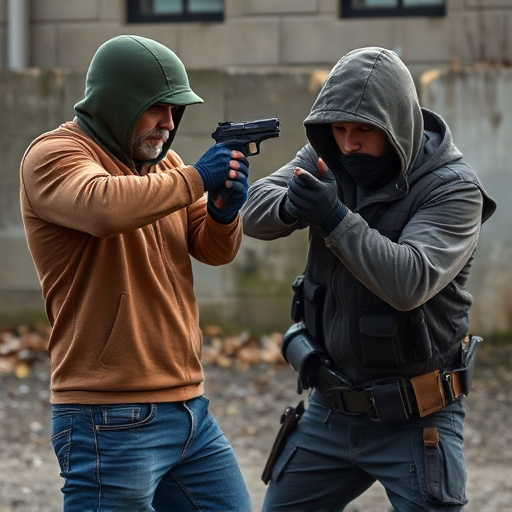Low light pepper spray tactics have transformed self-defense in challenging visibility conditions, with a focus on aiming for vulnerable areas like eyes and face at close to intermediate ranges (3-10 meters). Trained professionals use hand signals or infrared lighting for coordinated deployment while considering environmental factors and subject behavior. Regular training, including realistic scenarios and safety measures like PPE, ensures effective and safe usage in diverse real-world situations.
“In today’s dynamic world, law enforcement agencies and security professionals are increasingly turning to tactical inflammatory spray systems as a critical tool for self-defense. With an emphasis on low light pepper spray tactics, this article delves into the essentials of effective deployment strategies. We explore ‘Understanding Low Light Pepper Spray Tactics: The Basics’ and uncover advanced training methods and safety measures for optimal protection. Discover how these systems are revolutionizing personal security.”
- Understanding Low Light Pepper Spray Tactics: The Basics
- Effective Deployment Strategies for Optimal Protection
- Advanced Training and Safety Measures for Tactical Inflammatory Spray Systems
Understanding Low Light Pepper Spray Tactics: The Basics
In the realm of self-defense, low light pepper spray tactics have emerged as a game-changer for individuals seeking to protect themselves in challenging conditions. These specialized techniques focus on effective strategies when visibility is limited, ensuring that users can defend themselves with precision and force. The key lies in understanding how to deploy pepper spray accurately in dimly lit or dark environments, where traditional visual cues may be obstructed.
The basics involve mastering the spray’s range, direction, and the unique properties of the chemical compound. Low light conditions often require a tactical approach, such as aiming for vulnerable areas like eyes and face, ensuring a swift incapacitation. The pepper spray’s ability to cause temporary blindness and respiratory distress makes it a potent tool, but proper training is essential to guarantee safe and effective use.
Effective Deployment Strategies for Optimal Protection
In tactical situations, especially during low light conditions, effective deployment strategies for inflammatory spray are key to optimal protection. Law enforcement and security personnel should prioritize targeting the eyes and face, as these areas are most sensitive to pepper spray. Rapid, controlled bursts at close to intermediate range (3-10 meters) are recommended to maximize impact while minimizing risk of off-target effects. Trained individuals can use low light tactics such as hand signals or infrared lighting to coordinate deployment without compromising night vision.
For added effectiveness, consider the environment and subjects’ behavior. Deploying in a zigzag pattern or using strategic cover can enhance protection. In crowded or confined spaces, careful aiming and controlled releases are crucial to prevent excessive spraying that could harm bystanders. Regular training sessions focused on low light pepper spray tactics ensure personnel are prepared for real-world scenarios, enhancing overall safety and security measures.
Advanced Training and Safety Measures for Tactical Inflammatory Spray Systems
In the realm of tactical inflammatory spray defense systems, advanced training is paramount. Officers are schooled in low light pepper spray tactics, learning to deploy the agent effectively during night operations or in enclosed spaces where visibility is limited. This specialized training includes practice scenarios that mimic real-world situations, enabling law enforcement to handle various challenges while ensuring safety for both the officers and the individuals they encounter.
Safety measures are also a cornerstone of tactical inflammatory spray systems. Beyond proper training, these include wearing appropriate personal protective equipment (PPE), such as ballistic goggles and respirators, to shield against splatter and inhalation of the irritant. Additionally, officers must maintain regular maintenance and inspection of their devices, ensuring they function optimally and safely in any environment.
Low light pepper spray tactics have emerged as a powerful tool for self-defense, offering enhanced protection in challenging conditions. By understanding the basics of its deployment and mastering advanced training techniques, individuals can effectively utilize tactical inflammatory spray systems to deter threats. With proper safety measures in place, these strategies ensure optimal protection, empowering folks to navigate dangerous situations with confidence and peace of mind.
